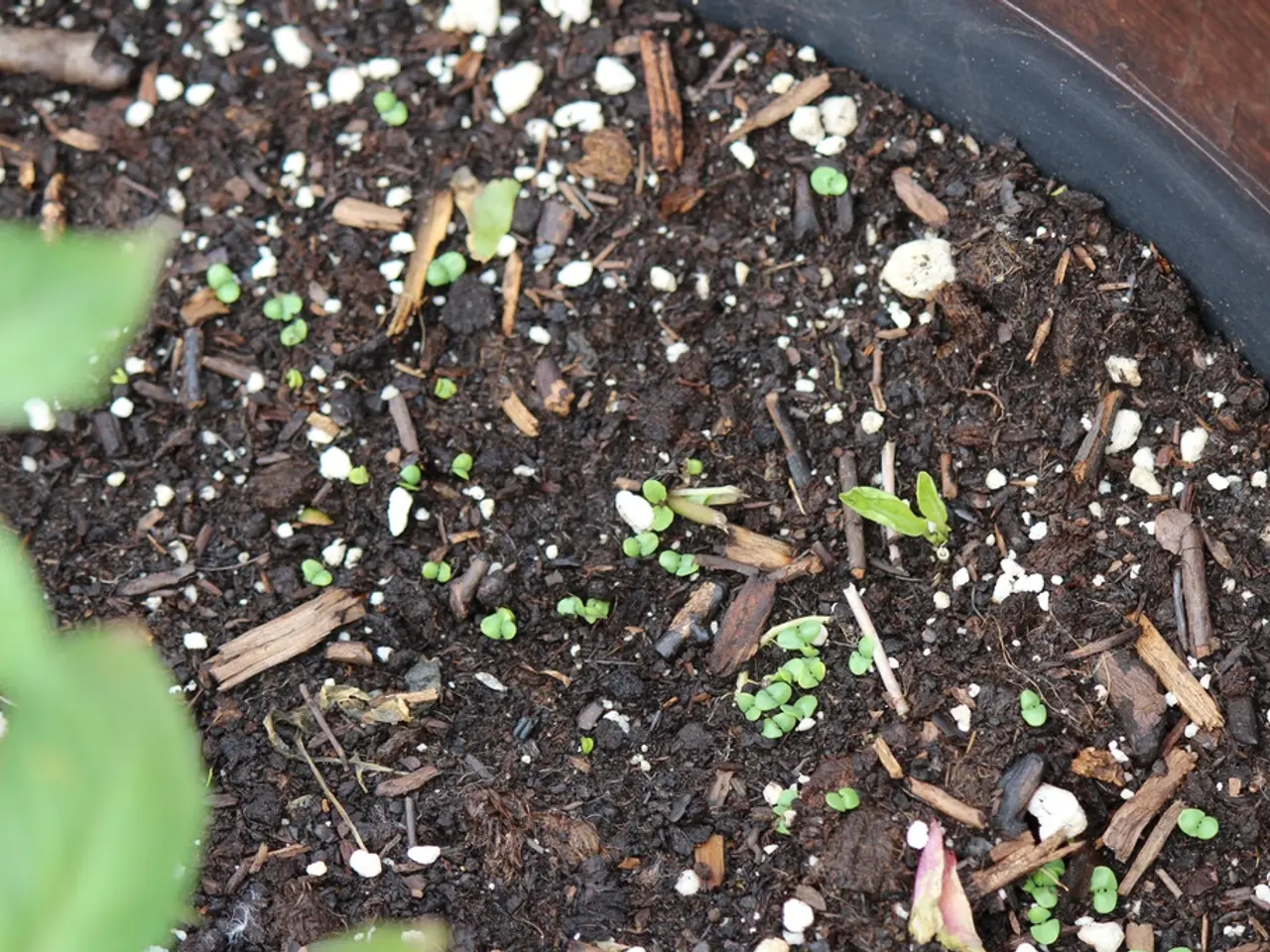Plant's Internal Odyssey: Delving into Soil Nutrient Procedures
In the intricate dance of life, soil nutrients play a vital role in supporting plant growth, development, and overall health. These nutrients can be broadly categorised into macronutrients and micronutrients, each with specific functions that contribute to the thriving of various plant species.
### Macronutrients
**Nitrogen (N)** promotes rapid green, leafy growth by supporting the synthesis of proteins and chlorophyll. However, excessive nitrogen can cause overly lush leaf growth at the expense of flowers and fruits and may attract pests like aphids.
**Phosphorus (P)** stimulates early root development and enhances blooming and flowering processes. It is critical during the plant’s root and reproductive stages.
**Potassium (K)** increases drought and disease resistance, improves seed quality, and plays a role in regulating water movement and enzyme activation within the plant.
**Calcium (Ca)** is important for root formation, cell wall strength, and regulating absorption of other nutrients. Calcium deficiency can lead to disorders like blossom end rot in tomatoes.
**Magnesium (Mg)** is essential for chlorophyll formation and photosynthesis, magnesium also regulates nutrient uptake and helps maintain soil structure by holding water and nutrients for plant use. Its deficiency results in yellowing of older leaves and stunted growth.
**Sulfur (S)** contributes to dark green coloration, seed production, and is necessary for the formation of amino acids, proteins, and vitamins.
### Micronutrients
**Copper (Cu)** acts as an enzymatic co-factor involved in photosynthesis, respiration, cell wall metabolism, lignin synthesis, and vitamin A production. It supports structural and metabolic functions essential for plant health.
**Molybdenum (Mo)** facilitates the conversion of nitrates to plant-available forms and is vital in nitrogen fixation processes, especially in legumes.
**Chlorine (Cl)** regulates osmotic balance, photosynthesis, water balance, and disease resistance by ensuring proper hydration and ionic balance within the plant.
**Nickel (Ni)** is crucial as a co-factor for urease enzyme, which converts urea into ammonia, supporting nitrogen metabolism and nutrient efficiency.
**Zinc (Zn)** plays a key role in enzyme function and genetic transcription (growth reproduction). Zinc deficiency causes stunted growth and abnormal leaf development.
**Sodium (Na)** is involved in stomatal function, photosynthesis, enzyme activity, and water regulation. Though important, an excess or deficiency can cause significant problems.
### Other Critical Elements
- **Carbon (C)** is the fundamental building block absorbed mostly as carbon dioxide through leaves, essential for the synthesis of carbohydrates, proteins, nucleic acids, starches, cellulose, and lignin, all major components of plant tissue.
- **Hydrogen (H)** is a key structural element in organic compounds forming the plant body.
Maintaining a balanced nutrient supply in the soil—through appropriate soil management, fertilization, and pH control—is critical to ensure optimal uptake of these nutrients for vigorous plant growth and productivity.
When changing the soil for a money plant, for instance, it's essential to ensure the new soil provides the necessary nutrients for the plant's growth. Poorly-drained and poorly-aerated soils can promote nitrogen loss through denitrification, while excessively-drained sandy soils can lead to leaching losses.
Soil organic matter is important for nutrient uptake, soil fertility management, and improving soil structure, aeration, water infiltration, and resistance to erosion. Moisture is essential for root growth and nutrient uptake, as it improves the uptake of nutrients by diffusion and root interaction and increases organic matter decomposition.
Understanding the impact of soil structure and texture on nutrient availability is essential for optimising plant growth and implementing effective nutrient management strategies. Phosphorus, for example, helps transfer energy from sunlight to plants and stimulates early root and plant growth.
The three main nutrients essential for plant growth are nitrogen, phosphorus, and potassium. As soil organic matter decomposes, it releases nutrients in a plant-available form, ensuring a continuous supply of nutrients for plant growth.
In conclusion, the dance of life in the soil is a complex one, with each nutrient playing a distinct and essential role. By understanding these roles and maintaining a balanced nutrient supply, we can ensure the vibrant growth and productivity of our plants.
- The dance of life in the soil is not only influenced by science but also intertwined with health-and-wellness, as soil health directly impacts plant growth and development.
- Nutrition, being a crucial aspect of the intricate soil dance, extends beyond human food, with micronutrients like Copper, Molybdenum, Chlorine, Nickel, Zinc, and Sodium all essential for plant growth and reproduction.
- Environmental-science and fitness-and-exercise can draw parallels with soil health as both demand a balanced intake for optimal performance. In this analogy, nutrients in the soil are akin to essential vitamins and minerals for plants, while soil management stands for diet and exercise habits for individuals.




